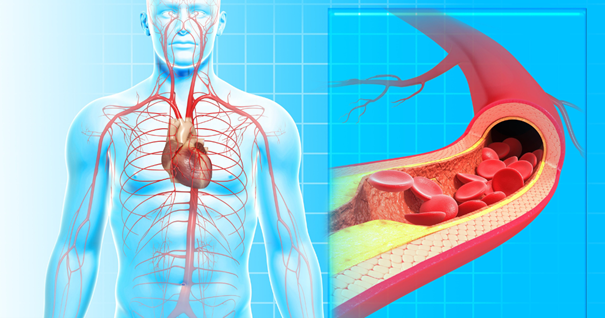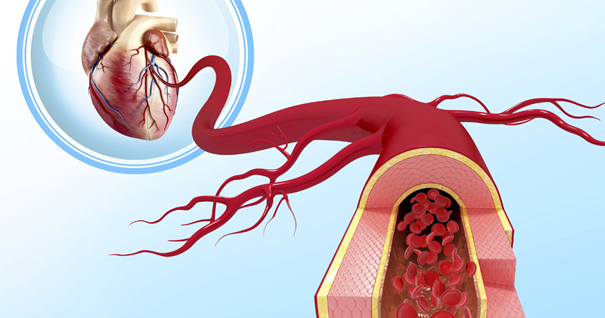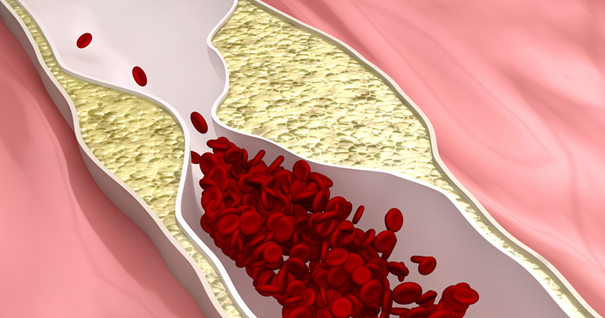Understanding the Carotid Arteries: Anatomy, Function, and Disease
August 15, 2024The carotid arteries are vital blood vessels that play a crucial role in the circulatory system. These arteries, located on each side of the neck, are responsible for supplying oxygen-rich blood to essential parts of the body, including the brain, face, and neck. Understanding the function and importance of the carotid artery is paramount for recognizing their impact on overall health and well-being.
The carotid arteries ensure that the brain receives a continuous supply of oxygenated blood, which is necessary for maintaining cognitive functions and overall brain health. Given their significance, it is essential to comprehend how these arteries function, their anatomy, and the common diseases associated with them. By gaining a deeper understanding of the carotid arteries, individuals can better appreciate their role in the circulatory system and take proactive measures to maintain vascular health.

Anatomy of the carotid arteries
The carotid arteries are essential for delivering blood to critical regions, including the brain, face, and neck. Key points about their anatomy include:
Each carotid artery has two primary segments: the common carotid artery and its branches.
The common carotid artery bifurcates into the internal and external carotid arteries around the fourth cervical vertebra.
- Internal carotid artery: Supplies blood to the brain.
- External carotid artery: Branches into smaller arteries to supply the face, neck, and scalp.
- External carotid artery Branches: external carotid artery branches are vital for nourishing the face, neck, and scalp.
Origins
- Right common carotid artery: Originates from the brachiocephalic trunk.
- Left common carotid artery: Stems directly from the aortic arch.
Understanding these structural details, including the extensive network of the external carotid artery branches, helps recognize the carotid arteries’ role in circulation and the impact of vascular diseases.
Function of the Carotid Arteries
The carotid arteries are crucial for the circulatory system, primarily supplying oxygenated blood to the brain. Key points about their function include:
Brain supply:
- Ensures a steady flow of oxygen-rich blood to sustain cognitive functions and overall brain health.
- Maintains neural activity and supports brain tissue metabolism.
Facial and neck circulation:
- External branches deliver blood to the face, neck, and scalp.
- Supports the health and functionality of muscles, skin, and other tissues.
Cognitive function:
- Adequate blood flow is essential for memory, attention, and executive functions.
- Compromised blood flow can lead to neurological deficits and impact brain health.

The pathway of blood flow in the carotid arteries
The carotid arteries play a pivotal role in channeling blood from the heart to the brain. The pathway begins with the aorta, the main artery leaving the heart. From the aorta, blood is directed into the common carotid artery on both sides of the neck. Each common carotid artery then ascends within the neck, functioning as a major conduit for blood flow.
At the level of the fourth cervical vertebra, each common carotid artery bifurcates into two crucial branches: the internal carotid artery and the external carotid artery. The internal carotid artery continues its journey upward, entering the cranial cavity through the carotid canal. It is primarily responsible for supplying blood to the brain, particularly to the anterior and middle cerebral arteries, which are vital for nourishing the frontal, temporal, and parietal lobes.
Simultaneously, the external carotid artery extends outward to supply the face, neck, and scalp. This neck artery, through its various branches, ensures that the muscles, skin, and other tissues in these regions receive adequate blood flow.
The carotid arteries also interact with other major arteries, forming a network of vascular connections that enhance cerebral circulation. For instance, the internal carotid artery connects with the vertebral arteries via the Circle of Willis, a ring-like structure at the base of the brain. This arterial circle acts as a safeguard, allowing blood to flow from one hemisphere to the other, ensuring that the brain maintains consistent perfusion even if one pathway is compromised.
Understanding the detailed pathway of blood flow through the carotid arteries highlights their essential function in maintaining cerebral and craniofacial health. By ensuring a continuous and adequate blood supply, the carotid arteries support critical physiological and cognitive processes, reinforcing their indispensable role in the circulatory system.
Common carotid artery diseases
Carotid artery diseases encompass a range of conditions that can significantly impact the function of these vital blood vessels. Among these, carotid artery disease is one of the most prevalent, often resulting from atherosclerosis, where plaque builds up on the artery walls, leading to narrowing or blockage. This condition can impede blood flow to the brain, increasing the risk of stroke and other severe complications.
Overview of carotid artery disease
Carotid artery disease primarily involves the narrowing or occlusion of the carotid arteries due to plaque accumulation. Plaques, composed of fat, cholesterol, calcium, and other substances, can reduce or obstruct blood flow, compromising the oxygen and nutrient supply to the brain. When the common carotid artery or its branches are affected, the risk of ischemic stroke escalates, potentially leading to significant neurological deficits.
Causes and risk factors
- Hypertension: High blood pressure damages artery walls, promoting plaque buildup.
- Hyperlipidemia: High cholesterol and triglyceride levels contribute to plaque formation.
- Smoking
- Diabetes
- Obesity
- Age: Increased risk as arteries become less flexible with age.
- Predisposition due to atherosclerosis or cardiovascular disease in the family.
Understanding these diseases, their causes, and risk factors is crucial for early detection and management. Recognizing signs and adopting preventive measures can help mitigate risks and maintain vascular health.
Carotid artery stenosis
Carotid artery stenosis is a serious condition where the carotid arteries narrow, impeding blood flow to the brain and increasing stroke risk, often due to atherosclerosis.
Carotid artery stenosis occurs when the carotid arteries become constricted, reducing the diameter through which blood can flow. This condition often remains asymptomatic until it reaches a critical point, where the reduced blood flow can lead to transient ischemic attacks (TIAs) or strokes.
Symptoms:
- Sudden weakness or numbness (face, arms, or legs).
- Difficulty speaking or understanding speech.
- Sudden vision loss or blurred vision.
- Dizziness or loss of balance.
Diagnostic Methods
- Carotid Ultrasound
- Magnetic Resonance Angiography (MRA)
- Computed Tomography Angiography (CTA)
- Cerebral Angiography
Treatment Options
- Heart-healthy diet, regular exercise, quitting smoking, managing hypertension and diabetes.
- Medications: Antiplatelet agents (aspirin) and statins to prevent clots and reduce cholesterol.
- Carotid Endarterectomy
- carotid artery Stenting
Early detection and management of carotid artery stenosis are crucial for preventing strokes. Regular check-ups, monitoring, and adherence to treatments can significantly improve outcomes.

Carotid artery aneurysm
Carotid artery aneurysms are a rare but serious condition characterized by the abnormal dilation or bulging of a section of the carotid artery. This weakening of the artery wall can pose significant health risks, including the potential for rupture.
A carotid artery aneurysm occurs when a portion of the artery wall becomes weakened and balloons outward. This can happen in any segment of the carotid artery, but it is most commonly found in the internal carotid artery near the base of the skull. The exact cause of carotid artery aneurysms is not always clear, but factors such as hypertension, atherosclerosis, genetic conditions, and trauma can contribute to their development.
Symptoms
- Pulsating neck lump
- Severe headache
- Neck or face pain
- Transient ischemic attacks (TIAs) or stroke-like symptoms
- Hoarseness or difficulty swallowing
Complications
- Rupture leading to hemorrhage and stroke
- Compression of nerves causing neurological deficits
Surgical and non-surgical treatments
- Regular imaging for small, asymptomatic aneurysms; manage hypertension and hyperlipidemia.
- Surgical Repair: Open surgery to remove and reconstruct the artery or bypass the aneurysm.
- Endovascular Repair: Inserting a stent-graft via catheter to reinforce the neck artery.
Early detection and treatment are crucial to prevent complications. Regular check-ups and managing cardiovascular risk factors are essential for better outcomes and maintaining vascular health.
Carotid artery dissection
Carotid artery dissection is a serious condition that occurs when a tear forms in the inner layer of the carotid artery wall. This tear allows blood to enter the arterial wall and separate its layers, which can significantly disrupt blood flow and increase the risk of stroke.
Carotid artery dissection involves a separation between the layers of the carotid artery wall, creating a false lumen where blood can pool and form a hematoma. This can lead to the narrowing or complete obstruction of the artery, severely compromising blood flow to the brain. carotid artery dissection can affect both the internal and external carotid arteries, although it more commonly involves the internal carotid artery.
Risk factors
- Trauma (e.g., neck injury)
- Connective tissue disorders (Marfan syndrome, Ehlers-Danlos syndrome)
- Hypertension
- Spontaneous dissections without clear cause
Symptoms
- Sudden, severe headache
- Neck pain
- Transient ischemic attacks (TIAs) or stroke symptoms
- Horner’s syndrome (drooping eyelid, constricted pupil, lack of sweating on one side)
Treatment strategies
- Anticoagulants or antiplatelet medications to prevent clots and stabilize the dissection.
- Regular imaging (ultrasound, MRI, CT angiography) to assess and monitor the dissection.
- Carotid endarterectomy or stenting for significant narrowing or obstruction.
- Managing hypertension, avoiding neck trauma, and making healthy lifestyle changes.
- Early diagnosis and treatment are crucial to prevent stroke. Immediate medical attention is essential for those experiencing symptoms of carotid artery dissection.

Diagnosis of carotid artery conditions
Diagnosing carotid artery conditions involves advanced imaging, thorough physical exams, and early detection to prevent serious complications like strokes.
Imaging techniques
- Carotid Ultrasound: Used to detect abnormalities in the external carotid artery branches and overall carotid health.
- MRI (Magnetic Resonance Imaging)
- CT (Computed Tomography) Scans
- Cerebral Angiography
Physical examination procedures
- Auscultation: Listening for abnormal sounds (bruits) indicating turbulent blood flow.
- Palpation: Feeling the carotid pulse to detect abnormalities.
- Neurological Assessment: Checking for signs of TIAs or strokes related to carotid artery issues.
Awareness and proactive healthcare are key to maintaining carotid artery health and overall vascular well-being.
Treatment and management of carotid artery diseases
Effective treatment and management of carotid artery diseases are crucial to reduce stroke risk. Strategies include lifestyle changes, medications, and surgical interventions.
Lifestyle changes and preventive measures
- Eat fruits, vegetables, whole grains, lean proteins, and healthy fats to lower cholesterol and reduce plaque.
- Regular Exercise
- Quitting smoking improves vascular health and reduces disease risk.
- Keep blood pressure normal to minimize artery damage.
- Manage diabetes through diet, exercise, and medication to protect blood vessels.
Medications commonly prescribed
- Antiplatelet Agents: Aspirin and clopidogrel prevent blood clots, reducing stroke risk in the neck artery.
- Statins: Lower cholesterol, reduce plaque buildup, and stabilize existing plaques.
- Antihypertensives: ACE inhibitors, beta-blockers, and calcium channel blockers manage high blood pressure.
Surgical interventions
- Carotid Endarterectomy: Surgical removal of plaque from the carotid artery; recommended for severe stenosis or symptomatic patients.
- carotid artery Stenting: Insertion of a stent to widen the artery; preferred for high-risk surgical patients.
Preventing carotid artery diseases
Preventing carotid artery diseases is essential for cardiovascular health and reducing stroke risk. Proactive health measures can significantly lower the chances of developing these conditions.
Tips for maintaining healthy arteries
- Eat a balanced diet with fruits, vegetables, whole grains, lean proteins, and healthy fats. Avoid processed foods, excessive sugars, and unhealthy fats.
- Engage in physical activity for at least 30 minutes most days to improve cardiovascular health, control weight, and reduce blood pressure.
- Quit smoking to prevent vessel damage and reduce atherosclerosis risk.
- Drink alcohol in moderation to maintain healthy blood pressure and reduce arterial damage.
- Practice stress-reducing techniques like meditation, yoga, and deep breathing to benefit vascular health.
Incorporating these preventive measures into daily routines can significantly reduce the risk of carotid artery diseases. Proactive health management and regular check-ups are key to maintaining carotid artery health.

Living with carotid artery disease
Living with carotid artery disease requires diligent management and lifestyle adjustments. With the right strategies and support, individuals can lead fulfilling lives.
Managing symptoms and improving quality of life
- Take prescribed medications like antiplatelets, statins, and antihypertensives consistently.
- Maintain a heart-healthy diet and regular physical activity to control blood pressure and cholesterol.
- Regular check-ups and monitoring help detect changes early and adjust treatment.
- Recognize and address symptoms like TIAs promptly; seek immediate medical attention for sudden weakness, speech difficulties, or vision changes.
By managing symptoms and seeking support, individuals with carotid artery disease can improve their quality of life and maintain better health. Stay informed, connected, and proactive to navigate the challenges effectively.
In conclusion, the carotid arteries play a vital role in supplying oxygen-rich blood to the brain, face, and neck. Understanding the anatomy, function, and potential diseases of the carotid artery is crucial for maintaining overall cardiovascular health. Key points discussed include the critical function of these arteries in brain perfusion, common diseases such as stenosis, aneurysms, and dissections, and the importance of early diagnosis and appropriate treatment.
For anyone experiencing symptoms or having concerns about carotid artery health, seeking prompt medical advice is essential. Early intervention can prevent serious complications, such as strokes, and improve outcomes significantly.
